
A lichen is a symbiosis of an algae or cyanobacteria living among filaments of multiple fungi species, along with a yeast embedded in the cortex or "skin", in a mutualistic relationship. Lichens are important actors in nutrient cycling and act as producers which many higher trophic feeders feed on, such as reindeer, gastropods, nematodes, mites, and springtails. Lichens have properties different from those of their component organisms. They come in many colors, sizes, and forms and are sometimes plant-like, but are not plants. They may have tiny, leafless branches (fruticose); flat leaf-like structures (foliose); grow crust-like, adhering tightly to a surface (substrate) like a thick coat of paint (crustose); have a powder-like appearance (leprose); or other growth forms.

Malassezia is a genus of fungi. It is the sole genus in family Malasseziaceae, which is the only family in order Malasseziales, itself the single member of class Malasseziomycetes. Malassezia species are naturally found on the skin surfaces of many animals, including humans. In occasional opportunistic infections, some species can cause hypopigmentation or hyperpigmentation on the trunk and other locations in humans. Allergy tests for these fungi are available. It is believed French revolutionary Jean-Paul Marat suffered from a fungal infection from Malassezia restricta, which lead to his frequent bathing in a medicinal substance.

A bolas spider is a member of the orb-weaver spider that, instead of spinning a typical orb web, hunts by using one or more sticky "capture blobs" on the end of a silk line, known as a "bolas". By swinging the bolas at flying male moths or moth flies nearby, the spider may snag its prey rather like a fisherman snagging a fish on a hook. Because of this, they are also called angling or fishing spiders. The prey is lured to the spider by the production of up to three sex pheromone-analogues.

Rhizophydiales are an important group of chytrid fungi. They are found in soil as well as marine and fresh water habitats where they function as parasites and decomposers.
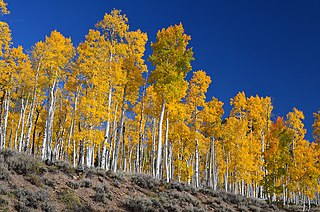
This article lists the largest organisms for various types of life and mostly considers extant species, which found on Earth can be determined according to various aspects of an organism's size, such as: mass, volume, area, length, height, or even genome size. Some organisms group together to form a superorganism, but such are not classed as single large organisms. The Great Barrier Reef is the world's largest structure composed of living entities, stretching 2,000 km (1,200 mi), but contains many organisms of many types of species.
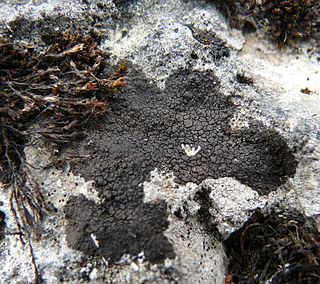
Verrucariaceae is a family of lichens and a few non-lichenised fungi in the order Verrucariales. The lichens have a wide variety of thallus forms, from crustose (crust-like) to foliose (bushy) and squamulose (scaly). Most of them grow on land, some in freshwater and a few in the sea. Many are free-living but there are some species that are parasites on other lichens, while one marine species always lives together with a leafy green alga.
The Halosphaeriaceae are a family of fungi in the Sordariomycetes class, subclass Hypocreomycetidae. Halosphaeriaceae is the family with the largest number of marine fungi with a few species are from freshwater and terrestrial habitats.
Limnoperdon is a fungal genus in the monotypic family Limnoperdaceae. The genus is also monotypic, as it contains a single species, the aquatic fungus Limnoperdon incarnatum. The species, described as new to science in 1976, produces fruit bodies that lack specialized structures such as a stem, cap and gills common in mushrooms. Rather, the fruit bodies—described as aquatic or floating puffballs—are small balls of loosely interwoven hyphae. The balls float on the surface of the water above submerged twigs. Experimental observations on the development of the fruit body, based on the growth on the fungus in pure culture, suggest that a thin strand of mycelium tethers the ball above water while it matures. Fruit bodies start out as a tuft of hyphae, then become cup-shaped, and eventually enclose around a single chamber that contains reddish spores. Initially discovered in a marsh in the state of Washington, the fungus has since been collected in Japan, South Africa, and Canada.
The Lulworthiaceae are a family of marine fungi in the Ascomycota, class Sordariomycetes. Species in the family have a widespread distribution in both temperate and tropical oceans, and are typically found growing on submerged wood or on seaweed. In 2000, Molecular analysis of several species of Lulworthia and Lindra led to the reassignment of their parent genera to the new order Lulworthiales in addition to the new family Lulworthiaceae. In 2020, a large fungi study added more genera to the family.

The hydnoid fungi are a group of fungi in the Basidiomycota with basidiocarps producing spores on pendant, tooth-like or spine-like projections. They are colloquially called tooth fungi. Originally such fungi were referred to the genus Hydnum, but it is now known that not all hydnoid species are closely related.
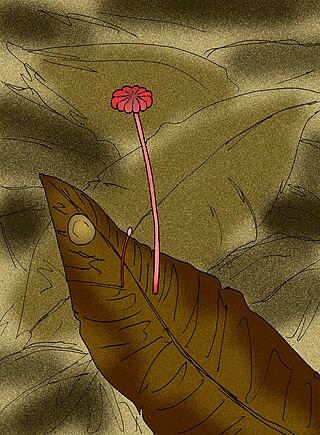
Archaeomarasmius is an extinct genus of gilled fungus in the Agaricales family Tricholomataceae, containing the single species Archaeomarasmius leggetti. It is known from two fruit bodies recovered from amber, one consisting of a complete cap with a broken stem, the other consisting of a fragment of a cap. The cap has a diameter ranging from 3.2 to 6 mm, while the stem is 0.5 mm (0.02 in) thick. Spores were also recovered from the amber, and are broadly ellipsoid to egg-shaped, measuring roughly 7.3 by 4.7 μm. The species, which resembles the extant genera Marasmius and Marasmiellus, is inferred to have been saprobic on plant litter or other forest debris.
Aureofungus is an extinct monotypic genus of gilled fungus in the order Agaricales. At present it contains the single species Aureofungus yaniguaensis.
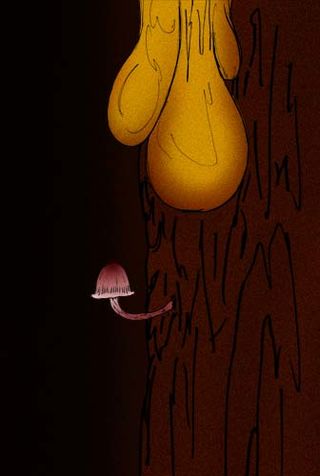
Protomycena is an extinct monotypic genus of gilled fungus in the family Mycenaceae, of order Agaricales. At present it contains the single species Protomycena electra, known from a single specimen collected in an amber mine in the Cordillera Septentrional area of the Dominican Republic. The fruit body of the fungus has a convex cap that is 5 mm (0.2 in) in diameter, with distantly spaced gills on the underside. The curved stipe is smooth and cylindrical, measuring 0.75 mm (0.030 in) thick by 10 mm (0.39 in) long, and lacks a ring. It resembles extant species of the genus Mycena. Protomycena is one of only five known agaric fungus species known in the fossil record and the second to be described from Dominican amber.
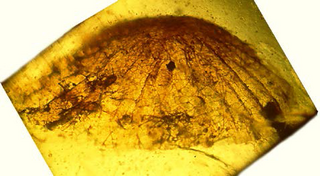
Palaeoagaracites is an extinct monotypic genus of gilled fungus in the order Agaricales. It contains the single species Palaeoagaracites antiquus.
Margaretbarromyces is an extinct monotypic genus of pleosporale fungus of uncertain family placement. At present it contains the single species Margaretbarromyces dictyosporus.
Appianoporites is an extinct monotypic genus of fungus in the Agaricomycetes family Hymenochaetaceae. At present it contains the single species Appianoporites vancouverensis.
Quatsinoporites is an extinct monotypic genus of agaricomycet fungus in the Agaricomycetes family Hymenochaetaceae. At present it contains the single species Quatsinoporites cranhamii.

Apterostigma is a genus of New World ants of the subfamily Myrmicinae. Two species have been described from fossils preserved in Dominican amber, while the others are extant. They are fungus-growing ants, though, unlike the majority of other species in Attini who grow Lepiotaceae, some species have begun cultivating Tricholomataceae.

Aspergillus versicolor is a slow-growing species of filamentous fungus commonly found in damp indoor environments and on food products. It has a characteristic musty odor associated with moldy homes and is a major producer of the hepatotoxic and carcinogenic mycotoxin sterigmatocystin. Like other Aspergillus species, A. versicolor is an eye, nose, and throat irritant.

Mastophora bisaccata is a species of orb weaver in the spider family Araneidae. It is also known as Mastaphora obesa. It is found in the United States and Mexico. Like all known species of the genus Mastophora, adult females are bolas spiders, capturing their prey with one or more sticky drops at the end of a single line of silk rather than in a web. Males and juvenile females capture their prey directly with their legs.












